ThoughtWork is an app to help users practice cognitive behavioral therapy (CBT) coping mechanisms on the go. I designed this app as a personal case study.
UX Design, User Research, UI Design, Prototyping
April 2021 - June 2021
Figma, Illustrator

Users can fill out CBT worksheets on their phones, choosing from a set of provided worksheets or building a custom one.
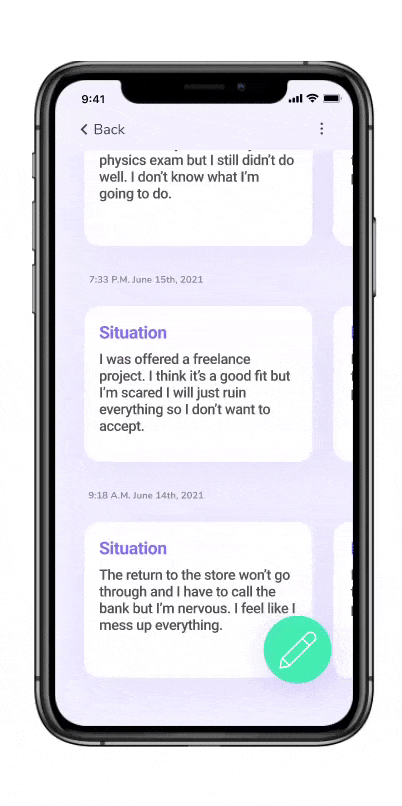
Users can export their worksheets as PDFs and send them to a mental health professional, usually a therapist.
CBT is a form of mental health intervention that focuses on identifying and challenging cognitive distortions and negative thinking patterns to improve emotional regulation. Many CBT therapists give patients CBT worksheets to fill out throughout the week, such as the one shown below. This worksheet lets the patient track their negative thoughts as soon as they arrive.
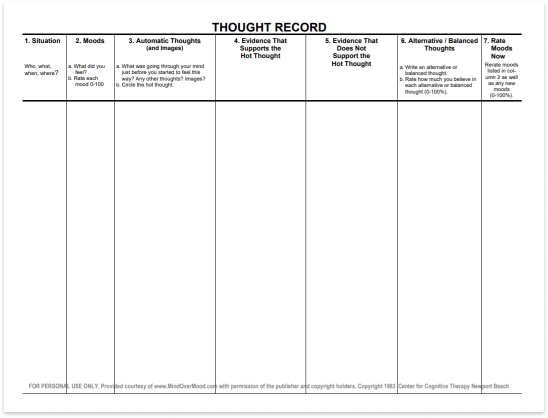
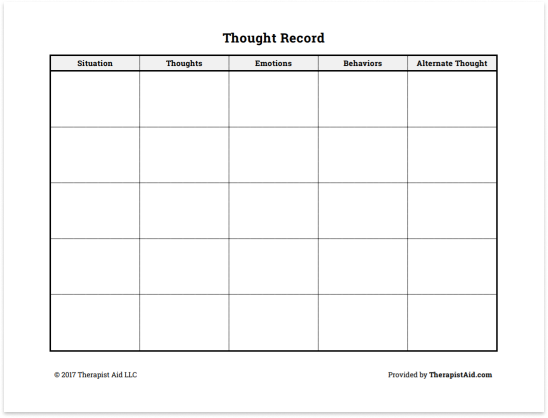
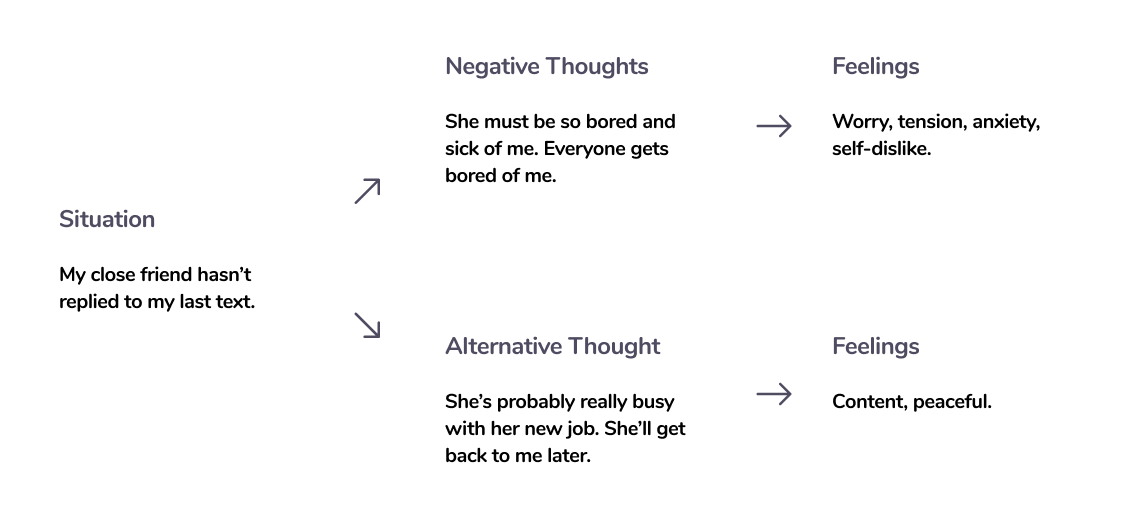
I conducted User Research through surveys and interviews with potential users.
Some users feel reluctant to engage in therapy due to cultural or social stigma. Other users engage in therapy but want to keep it private and discreet.
Users recieving CBT treatment often experience repeated patterns of spiraling thoughts, where smaller worries subsequently lead to a bigger ones.
Users forget to use their worksheets or coping mechanisms regularly throughout the week, and end up using them only shortly after or before therapy sessions.
Users struggle to keep track of and recall various CBT terminology, which can make using worksheets difficult and frustrating.
When users feel depressed, dejected and hopeless, they delay filling out their worksheets or using their other coping mechanisms.
When a user is constantly busy or on the go, they find it inconvenient to pull out their worksheet and a pencil everytime a negative thought arrives.
Based off of my research, I created the following user personas. Although my original plan was to design for CBT patients, I found that my design had to include people who were yet to start therapy.
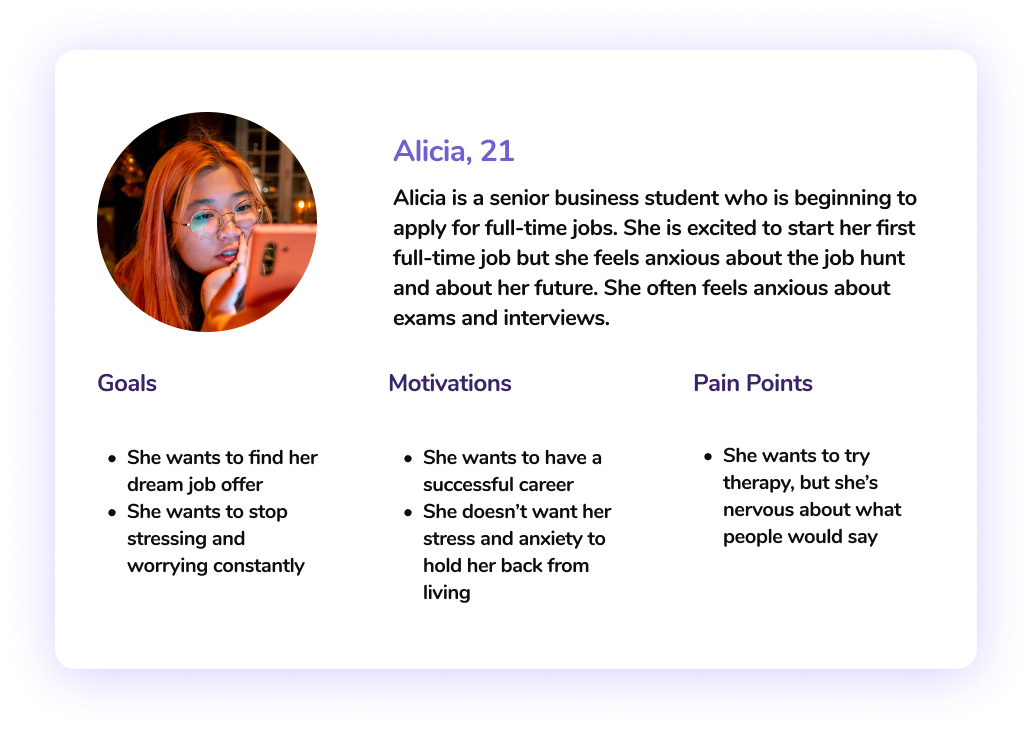
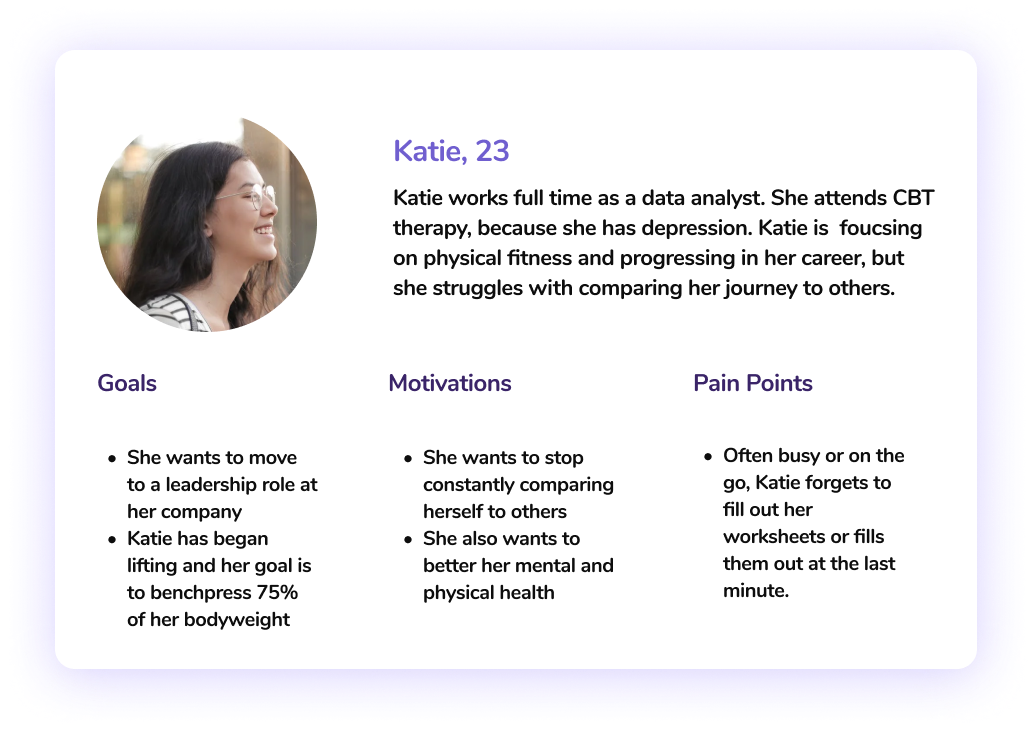
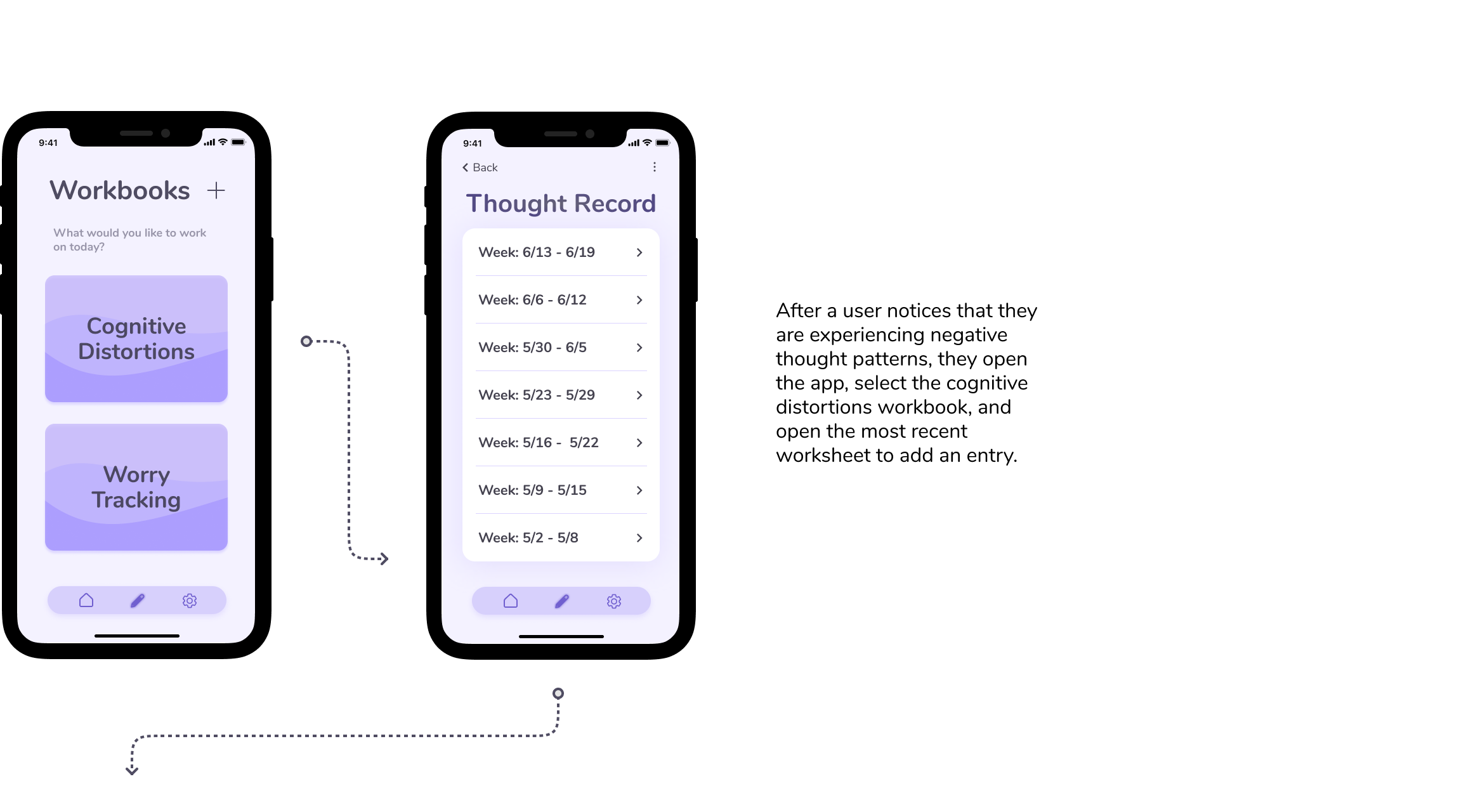
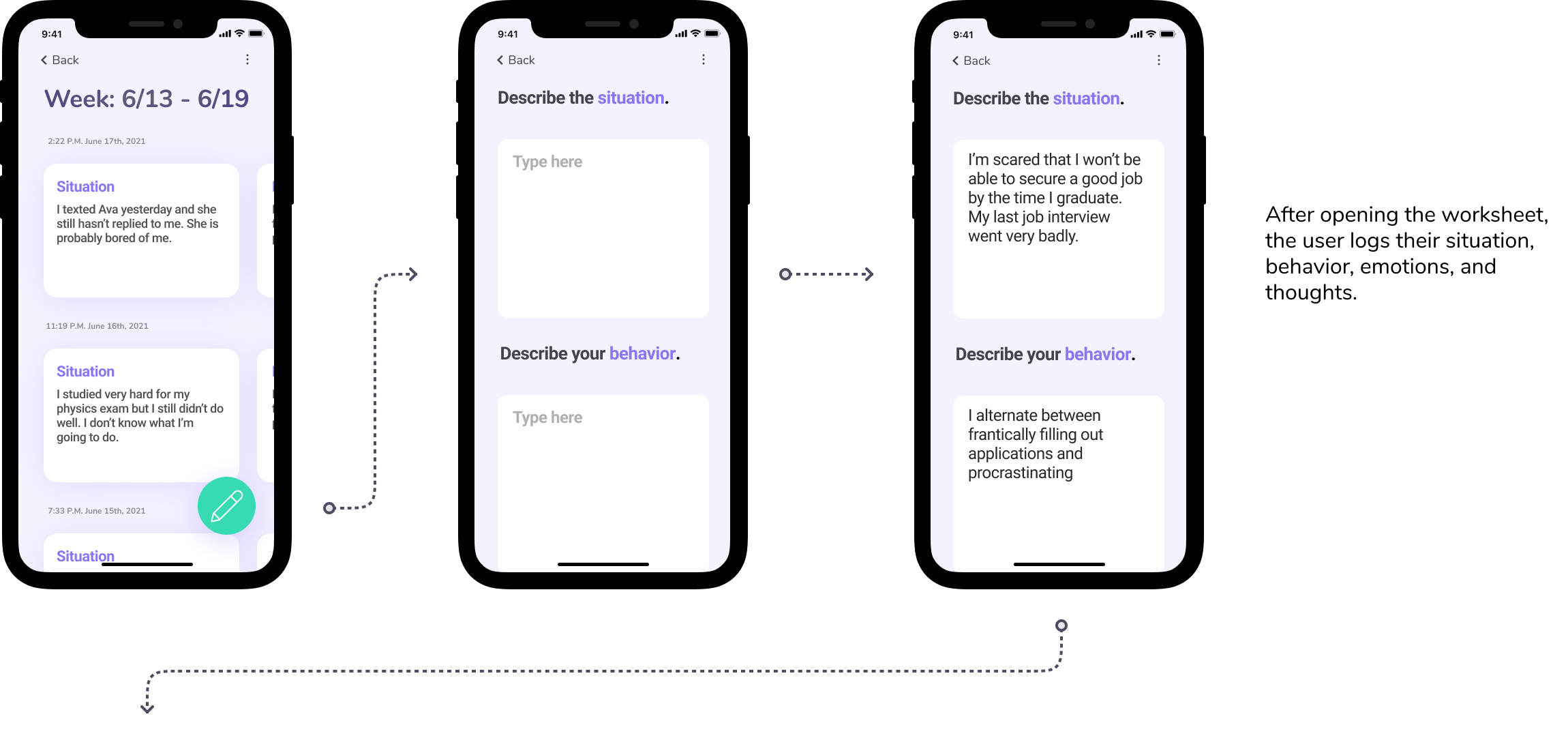
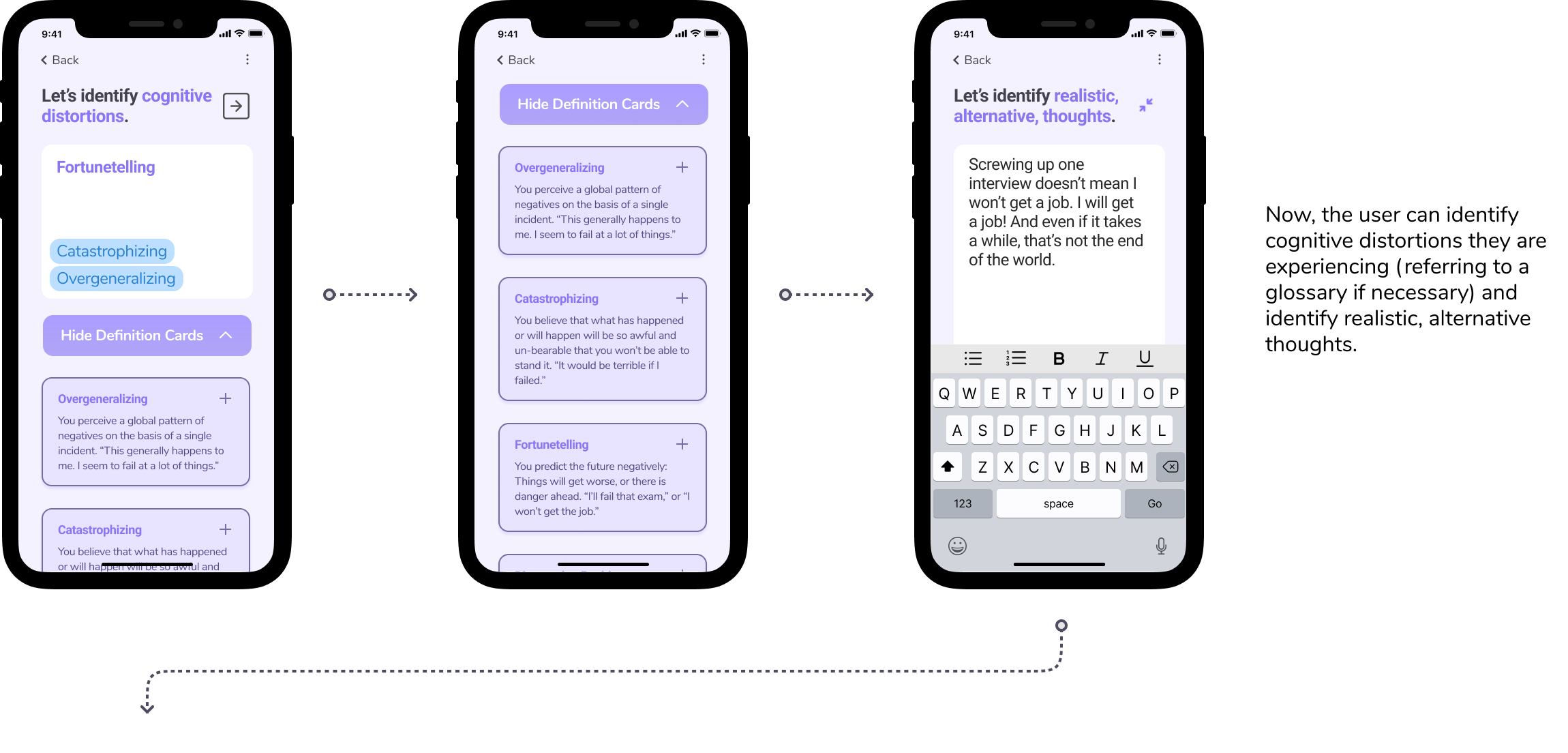
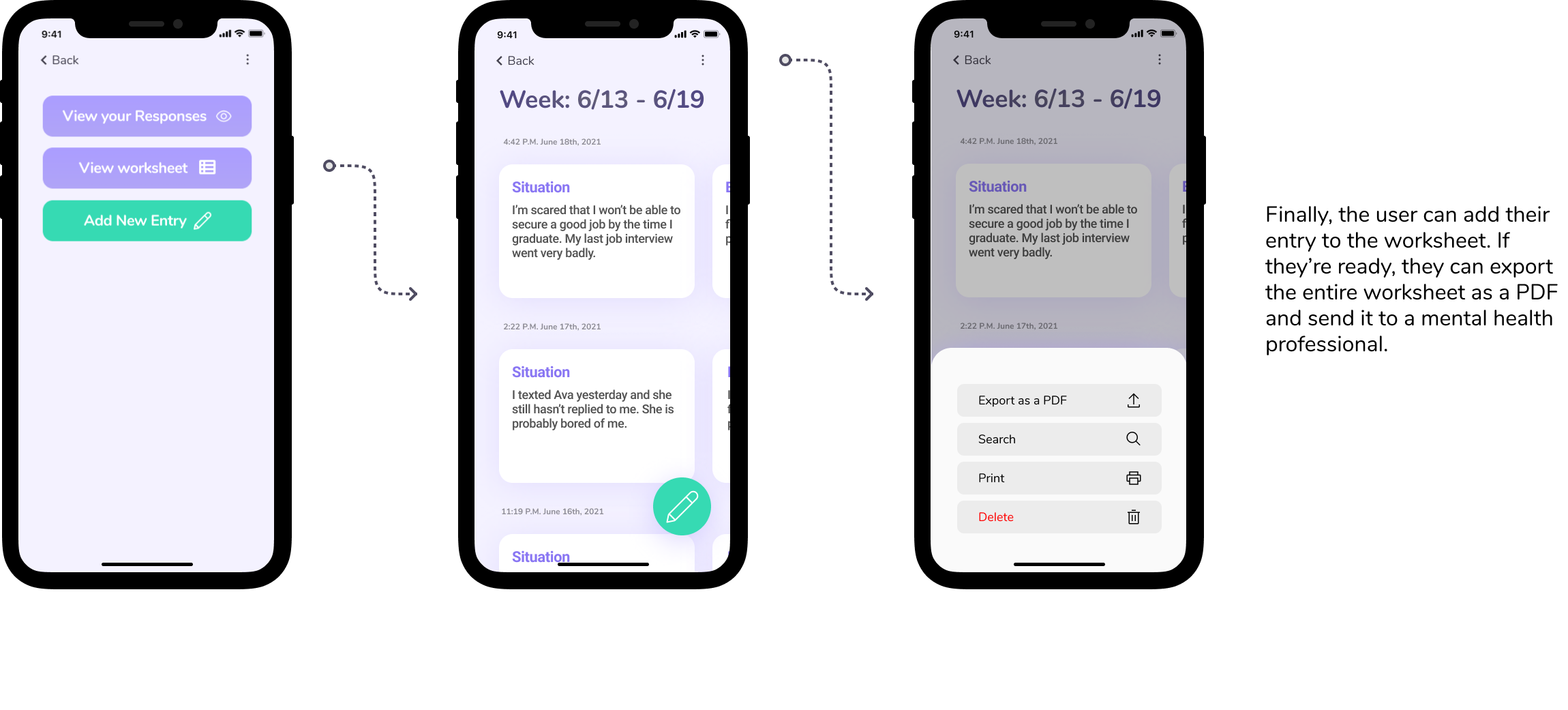
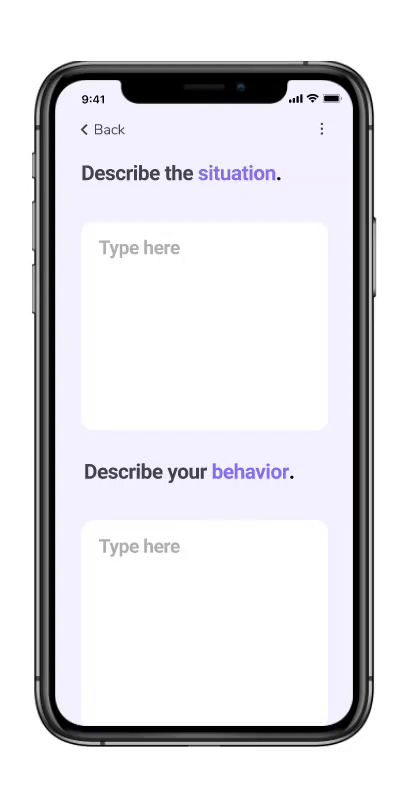

The text form expands to full screen to give the user plenty of room to express their feelings. Users can also organize their thoughts with numbers or bullet points.
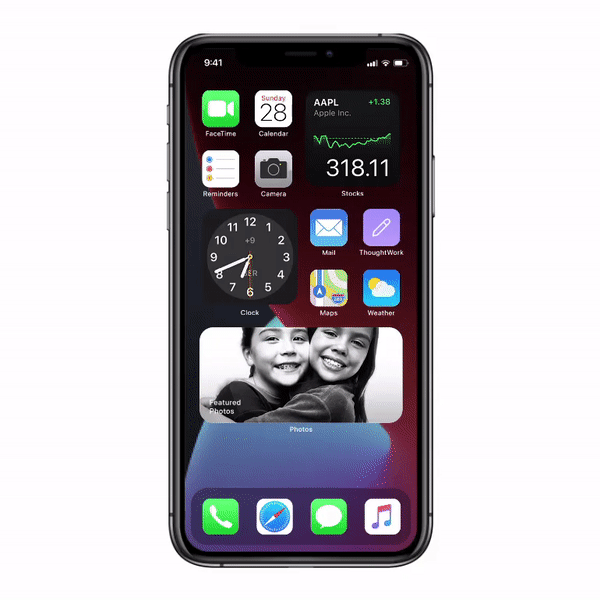
Each day, at a slightly different time, the app sends a notification reminding users to fill out their worksheet. The user's progress is tracked on the home screen to keep them motivated. The reminder is discreet and the app is password protected to protect the user's privacy.
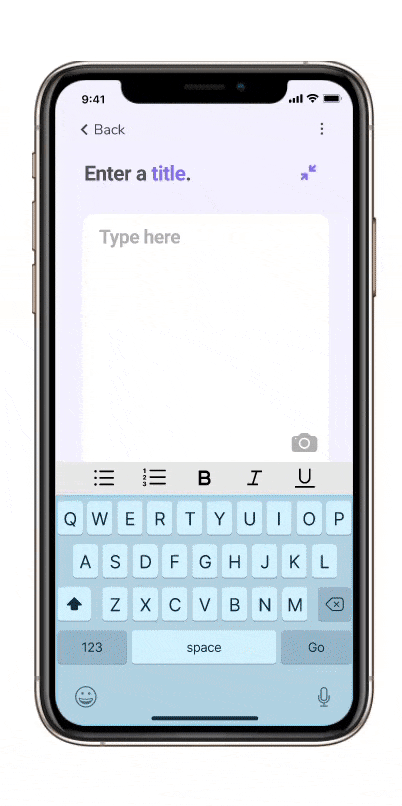
The app includes a custom worksheet feature so that users can enter prompts and create their own worksheet. Users can also use their camera to scan a printed worksheet and import it to the app.
Going forward, I would like to explore the idea of creating profiles for mental health professionals, so patients and therapists can trade worksheets inside the app. I would also like to work more closely with mental health professionals to best meet patients' needs. This is one of the first major case studies I attempted on my own. I really enjoyed addressing a problem that I am passionate about!